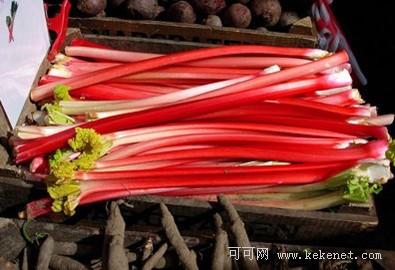
Rhubarb contains toxic Oxalates and anthraquinone glycoside.
大黃含有毒草酸以及蒽醌苷。
The good: Rhubarb is used in deserts, has laxative properties, contains tons of vitamins and minerals, and is low in calories. It's also easy to grow at home.
益處:大黃被用于制作藥材,有通便秘的功效,其含有大量的維生素和礦物質,所含的卡路里較少。而且也很容易在室內生長。
The bad: Oxalates in the rhubarb leaves makes them highly toxic. Another leaf-dwelling toxin is anthraquinone glycoside.
Try mixing the leaves with soda and water to see how corrosive these acids can be. But freezing rhubarb -- which is a common storage method -- can cause the toxins to sink to the stalks, resulting in contamination.
壞處:大黃的草酸中含有高濃度的有毒物質,另一種有毒物質是蒽醌苷。試著將其葉子與蘇打水相混合所產生的酸具有強烈的腐蝕性。人們一般會把食物冷藏,但是這樣做有毒物質就流入到了莖部,從而產生致命的化學作用。

















